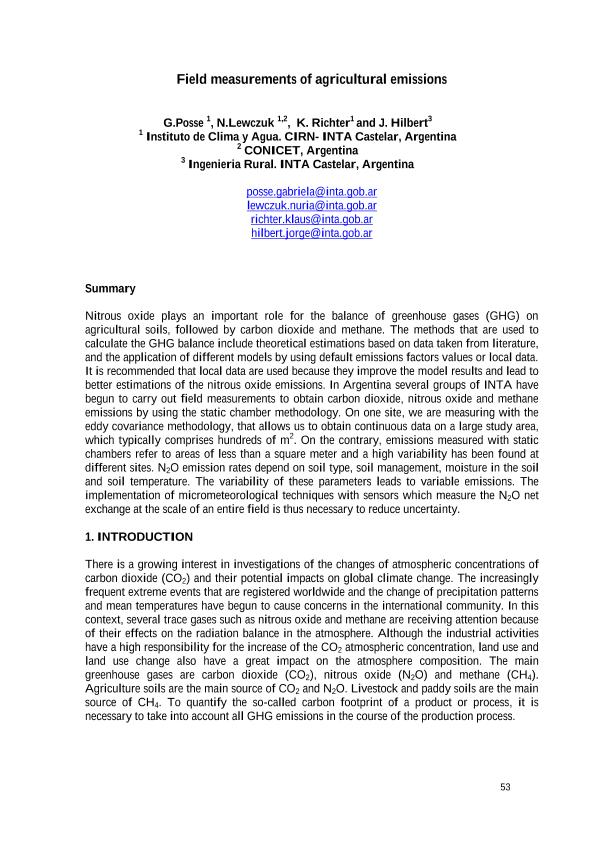Artículo
Field measurements of agricultural emissions
Fecha de publicación:
01/2015
Editorial:
JRC Science Hub
Revista:
Bioenergy and Latin America: A Multi-Country Perspective
ISSN:
1018-5593
e-ISSN:
1831-9424
Idioma:
Inglés
Tipo de recurso:
Artículo publicado
Clasificación temática:
Resumen
Nitrous oxide plays an important role for the balance of greenhouse gases (GHG) on agricultural soils, followed by carbon dioxide and methane. The methods that are used to calculate the GHG balance include theoretical estimations based on data taken from literature, and the application of different models by using default emissions factors values or local data. It is recommended that local data are used because they improve the model results and lead to better estimations of the nitrous oxide emissions. In Argentina several groups of INTA have begun to carry out field measurements to obtain carbon dioxide, nitrous oxide and methane emissions by using the static chamber methodology. On one site, we are measuring with the eddy covariance methodology, that allows us to obtain continuous data on a large study area, which typically comprises hundreds of m2. On the contrary, emissions measured with static chambers refer to areas of less than a square meter and a high variability has been found at different sites. N2O emission rates depend on soil type, soil management, moisture in the soil and soil temperature. The variability of these parameters leads to variable emissions. The implementation of micrometeorological techniques with sensors which measure the N2O net exchange at the scale of an entire field is thus necessary to reduce uncertainty.
Palabras clave:
Greenhouse gases
,
static chamber methodology
Archivos asociados
Licencia
Identificadores
Colecciones
Articulos(SEDE CENTRAL)
Articulos de SEDE CENTRAL
Articulos de SEDE CENTRAL
Citación
Posse, Gabriela; Lewczuk, Nuria; Richter, Klaus; Hilbert, Jorge Antonio; Field measurements of agricultural emissions; JRC Science Hub; Bioenergy and Latin America: A Multi-Country Perspective; 2015; 1-2015; 53-60
Compartir




